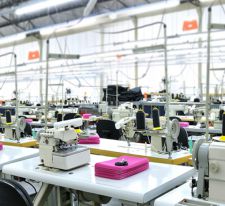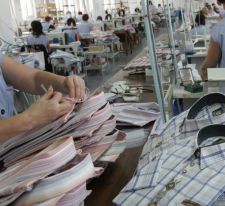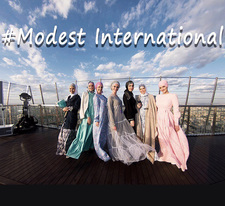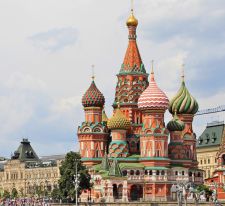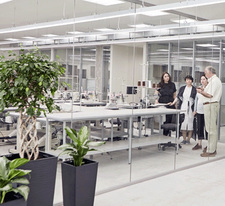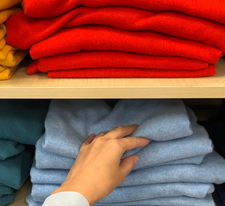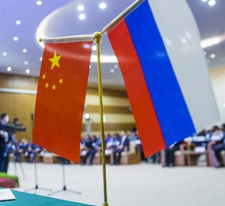Transfer of production to Russia: to sew or not to sew?
The issue of production has been one of the most pressing issues for Russian brands at the best of times. What can we say about the times of crisis! However, there is a silver lining. With the rise in the value of the dollar and the euro, production in Russia is getting cheaper. But is there a technical possibility to produce goods in Russia? What does our light industry have at its disposal now?
Recall that the clothing market in 2015, according to Fashion Consulting Group (FCG), decreased by 9% in ruble terms (to 1.4 trillion rubles), in dollar terms it fell by 43%. The share of the upper price segment accounted for 10%, the average - 30%, the mass market - 60%. According to the company's forecasts for 2016, the share of the mass market will increase by 5-10% due to a reduction in sales in the middle price segment. The share of premium and luxury (upper segment) will remain unchanged.
To date, China has the most developed light industry. According to the results of 2015, about a third of all products of the global light industry were produced in China. Also, the world leaders of light industry include the countries of South Asia, Indonesia, India, Pakistan, Bangladesh. The countries of Western Europe and the USA also have a developed light industry, but their main focus is the production of clothing and footwear of famous world brands from raw materials obtained from the same Asian and other developing countries. The European leader in the production of light industry goods is Italy, where a large number of trading houses specializing in the production of clothing, footwear and leather goods are concentrated. What about us?
According to the Ministry of Industry and Trade, there are now 14 thousand light industry enterprises in Russia. Their annual turnover is about 270 billion rubles. There are more than 200 large enterprises in the industry. Almost 330 thousand people are employed in the light industry of the Russian Federation. At the same time, about 1/3 of employees work in small enterprises with fewer than 50 employees. According to the results of 2014, their turnover amounted to 22.3% of the total production of the Russian light industry, which in monetary terms is equal to 64.44 billion rubles.
The numbers seem to be quite good. Let's add that Russian production has equaled the price of Chinese, and in some cases it turned out to be even 10-15% cheaper than Asian. The reduction in the cost of production in Russia gave large retailers a chance to move production to their homeland. And some (for example, Finn Flare, SELA, «Gloria Jeans » and others) are intensively starting to place orders for production in Russia. This is facilitated by the increase in the cost of labor in Southeast Asia, and the liberation of the domestic market from foreign-made light industry products.
Another advantage of local production is the proximity to both European and Asian markets. By transferring production to Russia, companies significantly benefit in logistics.
The labor force in China is getting more expensive every day. The salary of an employee of a Chinese textile factory has tripled in a decade and now stands at $ 700, which is already significantly higher than the average income of an employee of Russian enterprises. As a result, products are also becoming more expensive. As a result, the cost of a pair of genuine leather shoes made in Russia does not exceed the cost of a pair of synthetic shoes made in China. And in such conditions, we can become interesting to European companies already as suppliers.
However, the development and strengthening of the domestic market is impossible without cost optimization and a well-established production process. Despite the annually increasing number of closed factories, there are still many enterprises in Russia, but not all industry participants are aware of the level of their equipment, price offer and quality of the product received. As a result, the capacity utilization of factories remains incomplete, and brands continue to search for optimal production.
Expert opinion

Anna Lebsak-Kleimans, CEO of Fashion Consulting Group
Russian production can be a real alternative for brands that sell clothes in the middle and medium plus price segments. These are mainly designer brands, such as, for example, VASSA, Elena Shipilova, the premium line of the brand Kira Plastinina – LuBlu, as well as small-scale fashion brands.
When manufacturing in Russia, large mass-produced Russian brands have to solve two tasks simultaneously: to keep prices low, that is, to save as much as possible on costs, but at the same time to ensure quality comparable to mass-produced and inexpensive European brands such as H& M, New Yorker. Quality refers to the composition of raw materials, quality of tailoring, fit, quality of fittings, design. The modern buyer is sufficiently educated and has the opportunity to compare a variety of offers. Therefore, the collections of Russian brands must match the products of foreign competitors who offer clothes at the same prices. When manufacturing in Russia, only a small number of brands are still able to do this. As successful examples, we can cite the networks "YOURS", "Gloria Jeans", Glance.
Effective sewing production should have its own base of high-quality fabrics, technologies for testing and introducing new samples, high speed of batch execution, high labor productivity, an effective quality control system that ensures a low percentage of defects, etc. The main part of large Russian brands that strive to keep prices low, but not to lose quality, cannot find such production sites for large-scale production.
According to research Fashion Consulting Group, if the Russian buyer with an average income to offer the choice – to buy women's blouse 100% cotton same style, but differ only in the country of origin on the label ("Made in Russia’, ‘Made in Turkey” “Made in China”, “Made in Germany”, “Made in Italy"), the priority of choice will be for Italy and Germany, further, buyers would choose Russia and Turkey, and in the last place – China.
High-quality clothing Made in Russia is still more expensive today than clothing of similar quality from Bangladesh, China or the Philippines. Nevertheless, it is possible to increase the share of Russian goods in certain product categories, where Russian production is historically strong and where large enterprises with good traditions have been preserved, for example, men's suits, outerwear. In these categories, Russian production can offer a competitive product in the middle price segment of branded goods.
At the moment, it is too early to say that retailers have massively started transferring production to Russia. Yes, they are considering such possibilities, trying to look for alternatives. But none of the major players plans to completely abandon production outside the country. Placing orders for sewing in regions with efficient production and low labor costs is the logic of the modern fashion industry. This is not only how companies from countries with expensive labor work, but also from poorer regions. For example, major brands from poor Eastern Europe produce collections in China, Vietnam and Bangladesh.
There is another trend - the active development of local Russian vertical manufacturers, that is, brands that have appeared on the basis of their own factories. These are, for example, manufacturers of men's suits or knitwear. Against the background of more expensive imports, today they can offer more attractive prices for Russian buyers than those who buy collections for foreign currency.
Author: Svetlana Michan
Photo: Shutterstock.com


